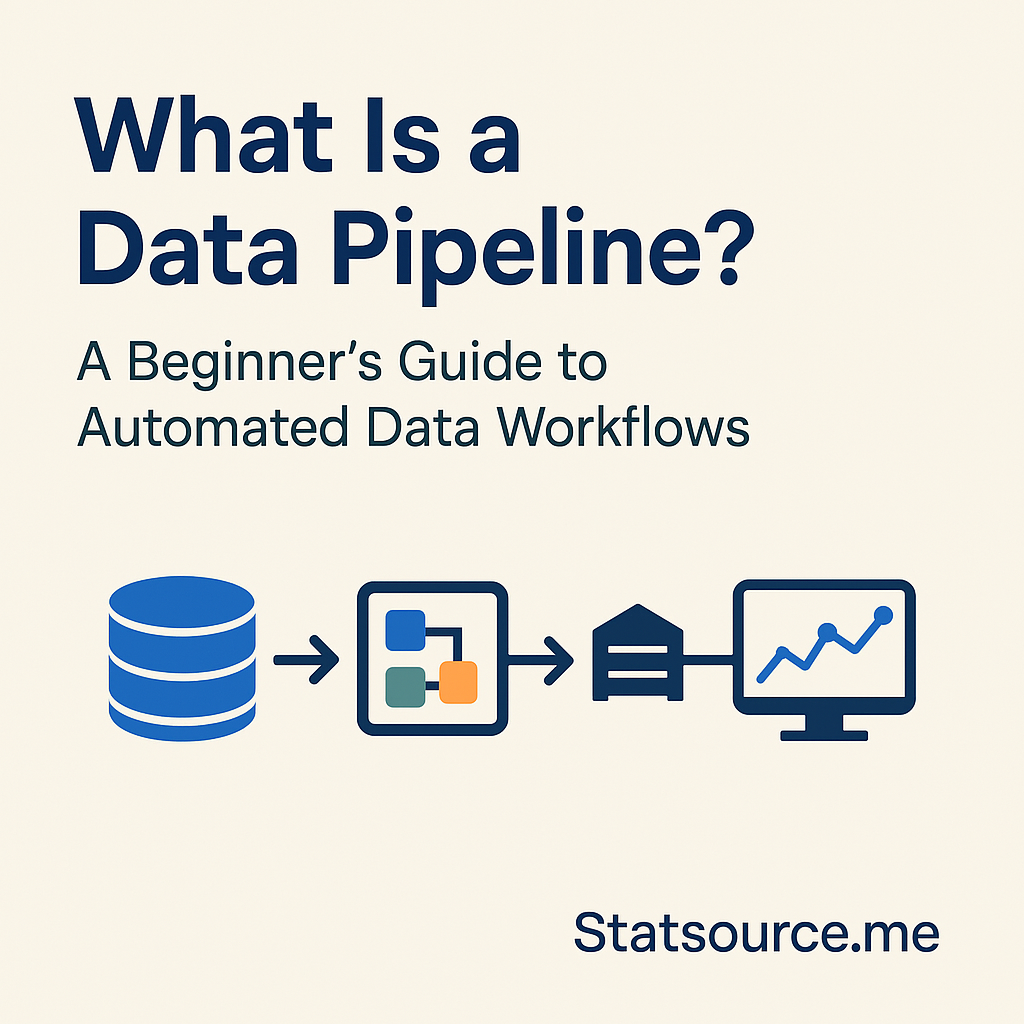In today's data-driven world, businesses generate massive volumes of information from websites, mobile apps, IoT sensors, and customer interactions. By 2025, global data creation is expected to reach over 180 zettabytes. The challenge? Turning that raw data into timely insights.
For teams aiming to automate reports, monitor key metrics, or power predictive models, data pipelines are essential. This guide walks you through the fundamentals of data pipelines, how they automate workflows, and how tools like Statsource.me can help you get immediate value from your pipeline output.
Understanding the Data Pipeline
A data pipeline is a set of automated processes that move data from one or more sources to a destination system, typically a data warehouse or analytics engine. Along the way, data may be cleaned, transformed, and validated.
Think of a data pipeline as a factory assembly line for data: raw ingredients (data) come in, undergo refinement (processing), and exit as a polished product (analytics-ready data).
Key Components of a Data Pipeline
Data Sources These are the origins of raw data: APIs, databases, event logs, files, sensors, and more.
Data Ingestion Layer Tools like Apache Kafka, AWS Kinesis, or batch scripts pull data from sources into a pipeline.
ETL/ELT Processes
- Extract: Collect data from source systems
- Transform: Clean, filter, aggregate, and format the data
- Load: Push data to storage systems like data warehouses or lakes
Storage Layer Cloud-based systems like Amazon Redshift, Snowflake, or PostgreSQL often serve as final destinations.
Analytics and Visualization After storage, data is ready for business intelligence tools, machine learning models, or statistical platforms like Statsource.me.
Real-World Example: E-commerce Clickstream Tracking
Imagine an e-commerce company that wants to analyze:
- Which products are most viewed before purchase?
- How many users abandon carts daily?
- What time of day conversions peak?
Their data workflow might look like this:
- Sources: Website logs, payment system APIs, user behavior events
- Ingestion: Real-time event streaming with Kafka
- Processing: Spark jobs to clean and join logs with customer data
- Storage: PostgreSQL or Snowflake
- Analytics: Daily dashboards and churn prediction models via Statsource.me
With this pipeline in place, the business no longer waits for manual exports or inconsistent data updates. They get up-to-date, reliable insights around the clock.
Benefits of Automated Data Pipelines
- Speed: Instantly process and deliver fresh data
- Scalability: Handle growing data volumes without rearchitecting
- Reliability: Reduce human errors and ensure consistent delivery
- Flexibility: Easily plug in new sources or destinations
Automating data pipelines removes bottlenecks, empowers analysts, and improves time-to-insight—especially when combined with platforms designed for analytics.
How Statsource.me Fits into the Data Pipeline
Once data reaches a storage layer, the next step is turning it into insight. That's where Statsource.me excels.
Whether you're loading data from a CSV, PostgreSQL database, or real-time pipeline, Statsource lets you:
- Run statistical tests and models instantly
- Visualize trends and make predictions
- Integrate output into your reporting or ML stack
In a pipeline context, think of Statsource as the analytics engine at the end of the line. Once your pipeline delivers clean data, Statsource helps extract every ounce of value from it—without the overhead of writing complex code.
Final Thoughts: Start Small, Scale Smart
Data pipelines are the foundation of modern analytics. They simplify workflows, ensure trustworthy data delivery, and unlock real-time insights that drive better decisions.
Key takeaway: Start simple—maybe a batch pipeline moving CRM data into PostgreSQL nightly. As your needs grow, introduce streaming, error handling, and advanced analytics.
Ready to build your first data pipeline? Try Statsource.me to seamlessly connect your data and start gaining insights from your very first dataset.
